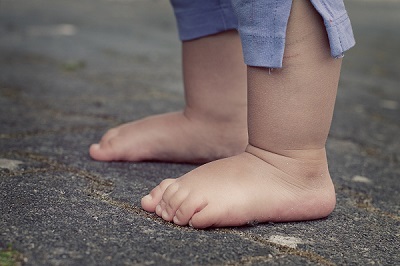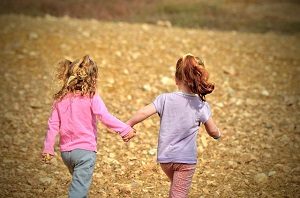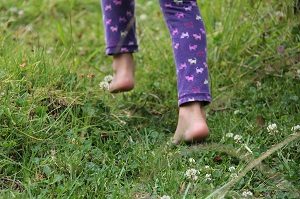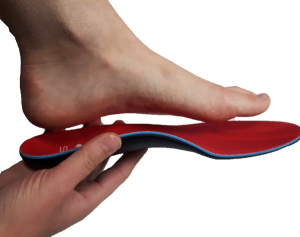
Kids and their Feet
As kids and their feet develop, it is important to keep their feet healthy to prevent pain and other issues in the future. What may seem like growing pains might be an issue with the feet.
Development
By age six, the arch on the inside of the foot has developed. Although the foot is still growing, the shape of the arch has completed development. Before the age of six, a flat foot is normal. After this age, monitor the feet for any arch collapse, toe walking or in- and out-toeing. Children tend to compensate in unique ways when the arch wants to collapse!
Do they need support?
Because of the barefoot running movement some years back, researchers are starting to study the effects of less support and barefoot running. Before this movement, maximum support and support early in life was used. We are now at a time where we look at support somewhere in between maximum and minimum.
My recommendations for children are slightly different than adults because children are able to heal faster. I typically recommend some barefoot activity for children. Whenever there is pain, I recommend support at the beginning to optimize healing. Once the pain has subsided, gradually introducing some barefoot activity may be beneficial to strengthen the foot. With that being said, the amount of barefoot activity depends on the severity of the arch collapse, level of pain and activity level.
What shoes should I buy?
 For any child, a good fitting shoe is important for comfort, and to prevent pain and unwanted pressure. Because children can grow rapidly, we all want to buy shoes a size bigger to make them last longer. When fitting shoes for a child, I typically recommend shoes with about 1/2″ to 3/4” space at the toes. This amount is approximately the width of a thumb. When shoes are too big, a risk to the child is tripping and falling.
For any child, a good fitting shoe is important for comfort, and to prevent pain and unwanted pressure. Because children can grow rapidly, we all want to buy shoes a size bigger to make them last longer. When fitting shoes for a child, I typically recommend shoes with about 1/2″ to 3/4” space at the toes. This amount is approximately the width of a thumb. When shoes are too big, a risk to the child is tripping and falling.
Supportive shoes are recommended especially for children in pain and those with flat feet. The best ways to test for a supportive shoe, is to bend the shoe in half and push at the back of the heel. Both of these areas should be strong and resist the pressure.
Refer to the blog on shoes for more information!
When to seek professional help
When there are signs of flat feet, pain, or other abnormal walking patterns after age six, an assessment from a professional is recommended.
Flat Feet
Observe for flat feet by watching the heels and ankles from the back. If one or both are rolling or bulging in, these are indications of flat feet. You can also check out this video for flat feet visual cues.
Pain
Pain in the feet, knees, hips or lower back may all be indications of flat feet. Growing pains may not be just growing pains. If your child is complaining of growing pains, take a look for flat feet and consult a professional.
 Abnormal Walking
Abnormal Walking
Abnormal walking patterns may include in-toeing, out-toeing or toe walking. These patterns may be compensations for flat feet or pain avoidance.
Hereditary
If there are foot problems in the family, children have a higher chance of developing the same problems. If this is the case, monitor your children’s feet regularly for signs of these issues developing.
What can be done?
Support
 When we observe abnormal walking patterns or flat feet leading to pain, arch support may be recommended. There are over the counter and custom options available, depending on the age and severity.
When we observe abnormal walking patterns or flat feet leading to pain, arch support may be recommended. There are over the counter and custom options available, depending on the age and severity.
Over the counter inserts are great to prevent any pain, and/or for children still developing and growing rapidly. Custom inserts are used when there is pain and/or more severe issues are present. There is no exact age when we switch from over the counter to custom, but I tend to recommend custom around age nine or ten.
Proper Shoes
Wearing supportive shoes become especially important when there is pain, but are also helpful to prevent future pain. Read “what shoes should I buy” above for more information, or read more detail in our separate blog about proper shoe fit.
Strengthening
Because children heal faster than adults, I tend to recommended some barefoot activity. The amount depends on the severity of the collapse, pain and the activity level. The combination of support and strengthening allows the body a chance to heal, while developing strong and balanced muscles.
If you have any questions, feel free to contact us!

You must be logged in to post a comment.